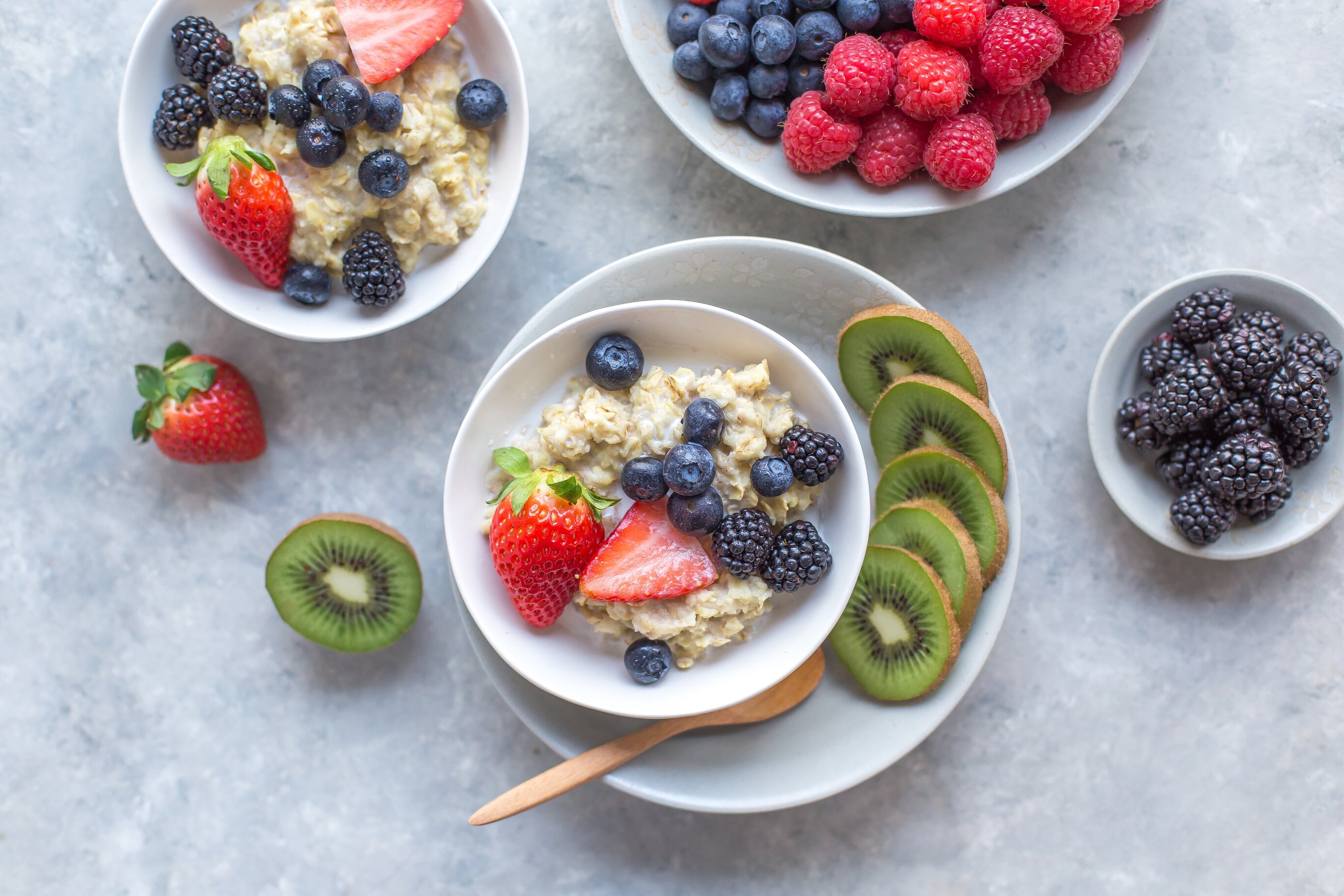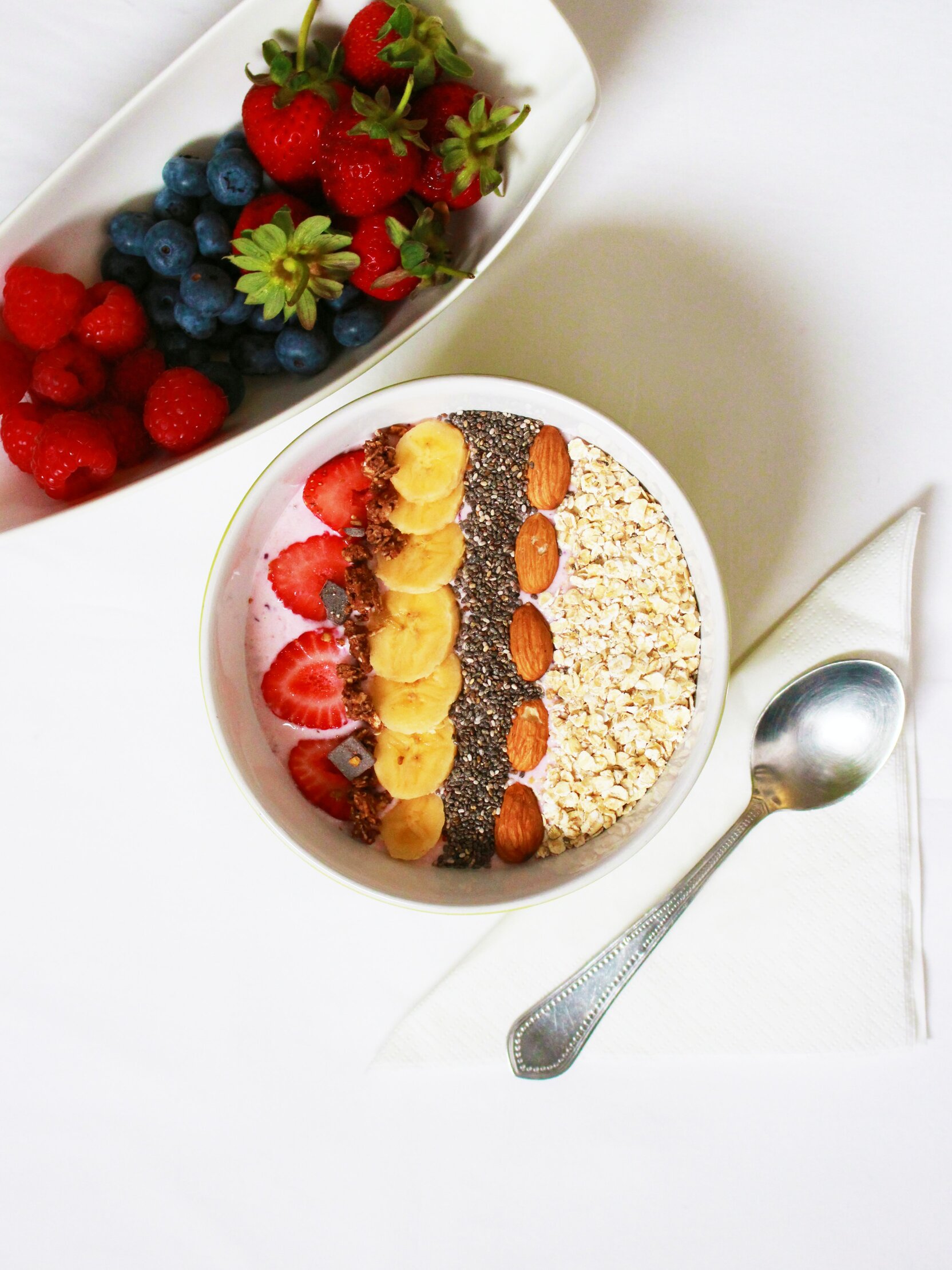Does Fiber Count as Calories?
I have often heard that because we don't have enzymes to digest fiber, this is a 0-calorie "nutrient". And I wondered, is it that simple? In the end, it is digested by our gut microbiota producing other compounds that we assimilate. Surely, those compounds must count as energy units for us. So, I dig into the research and I'm happy to share it with you.
What is fiber?
Fiber is a type of carbohydrate that cannot be broken down or absorbed by our body. However, they are food for our gut bacteria.
In general terms, people often divide fiber into two groups: insoluble fiber, which is able to hold large quantities of water; and soluble fiber, which is, as their name indicates, soluble in water forming viscous gels. Each group has its own characteristics which promote health in a slightly different way (discussed later in this post).1
the juicy question: does it contain calories?
In short, fiber itself has ~ 1-2 kcal/g, possibly less. However, this is not the full story. When we add fiber to our diet, it binds to other dietary components and inhibits their absorption. This means that we should subtract some calories from every gram of fiber we eat. A concrete final number is hard to set. In any case, we know this happens because scientists have determined the number of calories that are found in people's feces consuming different amounts of dietary fiber.

Which factors determine this calorie number?
 Type of fermentation.
Type of fermentation.
When bacteria digest fiber produce SCFAs (short-chain fatty acids), which subsequently are absorbed by our body and used as an energy source by cells from the colon, liver, and even the brain!
Because this fermentation is done anaerobically (no oxygen required), less energy is recovered from fiber (2-3 kcal/g) when compared to aerobic glycolysis (breakdown of glucose) (4 kcal/g).2
Things get a little more complex because certain bacteria can also use SCFAs produced by others. And not to mention the fact that a part of SCFAs are directly used for cellular activities in the colon other than being used as energy. This means that even though SCFAs are produced, not all of them will be absorbed. Scientists have proposed to lower the number to 1.5-2.5 kcal/g.3, 4
 Degree of fermentability.
Degree of fermentability.
Soluble fibers are generally fully fermented while insoluble are only done partially.1, 5, 6
 Antinutrient effect.
Antinutrient effect.
Fiber can bind to other nutrients, thereby reducing their absorbability. This will reduce the energy value of what we eat (if foods contain fiber or are taken together with fiber-containing foods). Clinical trials have shown that fat and protein digestibility is negatively affected when fiber in the diet increases.1,5
 Delay of intestinal transit time.
Delay of intestinal transit time.
Soluble and insoluble fiber have contrary effects on intestinal transit time.
Soluble fiber enlarges in the intestines forming a viscous matrix. This delays the emptying of the intestines leading to higher satiety signals (mainly happening through fat receptors). At the same time, this viscous gel may allow for more complete digestion of some nutrients.
Insoluble fiber leads to higher intestinal transit times and thus, diminishes the absorption of nutrients.1,5
 Type of fiber and individual microbiome.
Type of fiber and individual microbiome.
There are many different forms of fiber (not just soluble/insoluble), and each bacterium has its preference. Your gut bacteria determine the amount of fiber that is fermented and the energy produced from it.1

Fiber and weight loss
The idea is that fiber (especially soluble fiber) helps slow down intestinal transit, leading to higher satiety signals (mostly through fat sensors), often reported in human trials.7
Fiber stabilizes blood sugar (glucose) levels because it slows down the digestion rate of carbohydrates. This also relates to how full you feel after a meal.
Finally, fiber reduces the absorption of all macronutrients, which means that less energy will be recovered from a meal. This is actually great in terms of weight loss!
In general, results are very consistent. Dietary fiber predicts weight loss and adherence to a dietary program, independently of macronutrient and caloric intake.8, 9
Is there such a thing as too much fiber?
The main concern with increasing fiber is side effects like bloating and flatulence.1 This has a straightforward solution: increase it slowly over the course of months, so that the gut microbiome has time to change and adapt to higher amounts of fiber. The reason why you bloat is the lack of bacteria that digest specific types of fiber.10 Fiber that is not properly digested gets accumulated and sits in the intestines leading to feelings of bloating.
Some experts recommend 28g of fiber per 2000 calories.9,11
The U.S. Food and Drug Administration (FDA) claims a minimal consumption of dietary fiber of 35 g/day, 6g being soluble fiber to get the health effects of reduced risk of cancer and coronary heart disease (CHD). However, recent studies have found that for every 10g of additional fiber added to a diet, the mortality risk of CHD decreased by 17-35%.5
But, 35g of fiber. Does this sound like a lot to you?
Africans ingest more than 50 g/day, and this is associated with remarkably low rates of colon cancer.12 And what about our ancestors? They often consumed >100 g/daily!13
Personally, I have been increasing the amount of fiber gradually to 85-100 g/day, simply because I have been eating more fruits and vegetables over time. Just know that It took a while for my gut to adjust (bloating was "bread of every day"), though it was totally worth it!
Which foods contain fiber?
Fiber is only found in plant foods, and in general, plant foods contain both types of fiber in different amounts.
Tips for Increasing Fiber in your diet
- The obvious one, eat more veggies and fruits! Include their skin and peel since in most cases, vitamins and fiber remain there. For instance, I always eat the peel of kiwi, as well as most vegetables.
- Eat whole grains. Think of whole wheat pasta, brown rice, whole couscous...
- Eat beans, peas, or lentils on a daily basis. They are the best when it comes to fiber.
- Don't juice, eat the whole thing. Juicing reduces (filtrates) the fiber in fruits and vegetables. On the contrary, smoothies are a better option since whole fruit/vegetable is used. However, research suggests that fiber is broken down in high-speed blenders, possibly reducing some of its benefits. A smoothie here and there won't hurt, but I always prefer eating the food as a whole.
- Eat nuts daily! They also contain plenty of fiber.